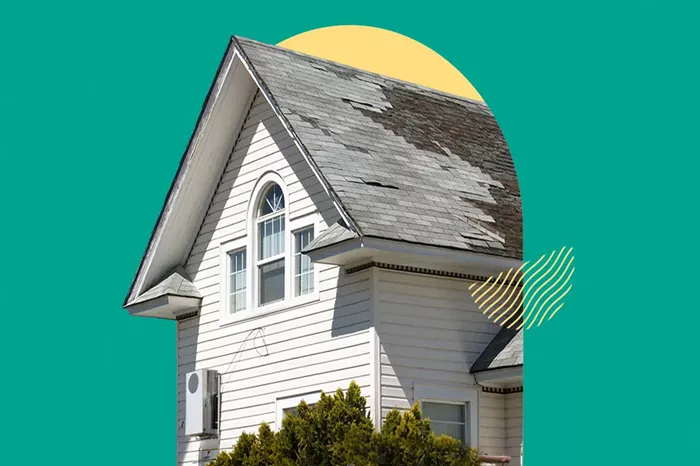Determining how much you should pay for house insurance is a vital step in protecting your home and your financial well-being. The cost of house insurance can vary significantly based on numerous factors, including your home’s value, location, and coverage options. This article delves into the essential aspects of house insurance costs, offering detailed insights to help you balance adequate coverage with affordability.
Understanding House Insurance Costs
Understanding what affects your house insurance premiums is crucial for making informed decisions. Several factors can influence the cost of your insurance, and knowing these can help you find the right coverage at a reasonable price.
Factors Affecting House Insurance Premiums
Home Value
Replacement Cost: The primary factor in determining your premium is the replacement cost of your home. This is the amount it would cost to rebuild your home from scratch, including materials and labor. Insuring your home for its replacement cost ensures you are fully covered in the event of a total loss.
Market Value: While replacement cost is crucial, some insurers also consider your home’s market value, which is influenced by factors like location and the current real estate market.
Location
Risk of Natural Disasters: Homes located in areas prone to natural disasters such as floods, earthquakes, or hurricanes often have higher insurance premiums due to the increased risk of damage. Flood insurance, for instance, is often purchased separately from standard home insurance.
Crime Rates: Properties in areas with higher crime rates, such as burglary or vandalism, may face increased premiums. Insurers consider the likelihood of claims related to theft or property damage.
Building Materials
Fire-Resistant Materials: Homes built with fire-resistant materials, such as brick or stone, may qualify for lower premiums. Fire-resistant materials reduce the risk of fire damage.
Age and Condition: The age of your home and the condition of its components (like plumbing, wiring, and roofing) can impact your insurance rates. Older homes or those with outdated systems may cost more to insure.
Home Security
Security Systems: Installing security systems, such as burglar alarms, smoke detectors, and deadbolt locks, can reduce your insurance premiums. These systems lower the risk of theft and damage, making your home a lower risk to insure.
Fire and Safety Measures: Implementing safety measures, such as fire extinguishers and sprinkler systems, can also contribute to lower insurance rates by reducing the risk of fire-related claims.
Coverage Options
Basic vs. Comprehensive Coverage: Basic policies typically cover essential risks such as fire, wind damage, and theft. Comprehensive policies provide broader coverage, including liability protection and coverage for additional risks like sewer backup or identity theft. The level of coverage you choose impacts your premium.
Additional Riders: Adding riders or endorsements for specific items or risks can increase your premium but provides extra protection. For example, a rider for high-value jewelry or art can ensure these items are fully covered.
Deductibles
Higher Deductibles: Opting for a higher deductible means you’ll pay more out of pocket before your insurance kicks in. While this lowers your monthly premium, it’s essential to ensure you can afford the deductible amount in case of a claim.
Lower Deductibles: Choosing a lower deductible increases your premium but reduces the amount you’ll need to pay out of pocket when making a claim. This can be beneficial if you prefer lower financial risk in the event of a loss.
Claims History
Frequency of Claims: Your claims history affects your premium. Frequent claims can indicate higher risk, leading to increased premiums. Maintaining a clean claims history can help keep your insurance costs down.
Types of Claims: The type of claims you’ve made in the past (e.g., water damage, theft) can also influence your premium. Some insurers may offer discounts for certain types of claims or for claim-free periods.
Calculating the Right Coverage
Determining the right amount of coverage involves assessing your home’s value, personal property, and liability needs. Properly calculating these elements ensures you are neither underinsured nor overinsured.
Assessing Replacement Costs
Home Valuation: Conduct a thorough evaluation of your home’s replacement cost, which should reflect current construction costs. This valuation should be updated periodically to keep pace with changes in building costs.
Professional Appraisal: Consider hiring a professional appraiser to determine the accurate replacement cost of your home. This can provide a more precise figure than relying on estimates alone.
Estimating Personal Property Value
Home Inventory: Create a detailed inventory of your personal belongings, including furniture, electronics, and clothing. This inventory will help estimate the total value of your possessions, ensuring you have adequate coverage for your personal property.
Valuation of High-Value Items: For high-value items such as jewelry, art, or collectibles, consider additional coverage or riders to ensure these items are fully protected.
Liability Coverage
Assessment of Risks: Evaluate the potential risks associated with your property and lifestyle. Liability coverage protects against legal claims for injuries or damages caused by you or your family members. Ensure that your liability coverage is adequate for your needs.
Umbrella Policies: Consider an umbrella policy for additional liability protection beyond your standard homeowner’s policy. This can provide extra coverage for large claims or lawsuits.
See Also: What Does Liability Insurance Cover For Homeowners
Finding the Best Insurance Rate
To get the best rate for house insurance, it’s important to shop around and compare different policies. Here are some tips for finding the most cost-effective insurance coverage.
Compare Multiple Quotes
Obtain Quotes: Request quotes from several insurance providers to compare premiums and coverage options. This helps you find a policy that offers the best balance between cost and coverage.
Evaluate Coverage: Ensure that you are comparing similar levels of coverage across different quotes. This includes checking the limits, deductibles, and types of coverage provided.
Review Discounts
Bundling Policies: Many insurers offer discounts for bundling home insurance with other policies, such as auto insurance. Inquire about available discounts to reduce your overall premium.
Safety Discounts: Ask about discounts for home safety features, such as security systems, smoke detectors, and fire extinguishers. These measures can lower your insurance costs.
Check the Insurer’s Reputation
Financial Stability: Research the financial stability of potential insurers to ensure they can handle claims effectively. Look for ratings from agencies such as A.M. Best or Standard & Poor’s.
Customer Service: Review customer feedback and ratings to gauge the insurer’s reputation for customer service. A company with a strong track record in handling claims and customer inquiries is preferable.
Consider Policy Reviews
Regular Reviews: Periodically review and update your insurance policy to reflect changes in your home’s value or your coverage needs. This helps ensure that your insurance remains adequate and cost-effective.
Adjustments: Make adjustments to your coverage as needed, such as adding new items to your inventory or changing your deductible.
Conclusion
Determining how much you should pay for house insurance requires careful consideration of various factors, including home value, location, building materials, and coverage options. By understanding these factors, calculating the right amount of coverage, and shopping around for the best rates, you can ensure you have adequate protection for your home and belongings while managing your insurance costs effectively. Regularly reviewing your policy and staying informed about available discounts can help you maintain the right balance between comprehensive coverage and affordability.
FAQs
1. How can I lower my house insurance premiums?
To lower your house insurance premiums, consider increasing your deductible, which can reduce your monthly payments but requires you to pay more out of pocket in the event of a claim. Additionally, installing security systems, smoke detectors, and other safety features can lead to discounts on your premium. Bundling your home insurance with other policies, such as auto insurance, can also result in cost savings. Regularly reviewing and updating your policy to ensure it reflects current home values and coverage needs can help avoid unnecessary expenses. Lastly, shopping around and comparing quotes from different insurers can uncover more affordable options that still meet your coverage requirements.
2. What types of coverage should I include in my house insurance policy?
A comprehensive house insurance policy should include coverage for the structure of your home, personal property, liability, and additional living expenses. Structural coverage protects against damage to the home’s physical components due to risks like fire or storm damage. Personal property coverage ensures your belongings are protected in case of theft or damage. Liability coverage is crucial for protecting against legal claims if someone is injured on your property. Additional living expenses coverage helps with costs if your home becomes uninhabitable due to a covered loss. Tailoring your policy to include these coverages ensures you have a well-rounded protection plan.
3. How often should I review my house insurance policy?
It is advisable to review your house insurance policy at least once a year, or whenever you experience significant changes that could affect your coverage needs. Major life events such as renovating your home, acquiring valuable items, or making significant purchases can impact the adequacy of your coverage. Additionally, changes in local risks or home values should prompt a policy review to ensure you are not underinsured. Regularly reviewing your policy helps maintain adequate coverage and allows you to adjust for changes in premiums or available discounts. Keeping your policy up-to-date ensures that you are always protected against potential risks.
4. What should I do if I have to file a claim?
If you need to file a claim, start by documenting the damage or loss thoroughly with photos and detailed notes. Contact your insurance company as soon as possible to report the claim and provide them with the necessary information. Keep records of all communications with your insurer and follow their instructions for the claims process. An adjuster may be assigned to assess the damage and determine the payout. Maintain receipts for any repairs or temporary living expenses incurred as a result of the loss. Be prepared to provide additional information or documentation if requested to support your claim.
5. Are there any risks that house insurance typically does not cover?
Yes, house insurance policies generally do not cover certain risks, including floods, earthquakes, and general wear and tear. For protection against floods, you would need a separate flood insurance policy, as standard home insurance typically excludes this coverage. Earthquake insurance is also available as an add-on or separate policy for those in quake-prone areas. Additionally, policies usually do not cover damage from pests, such as termites, or routine maintenance issues. It’s important to review your policy and consider additional coverage options for these specific risks if they are relevant to your location or home condition.






















